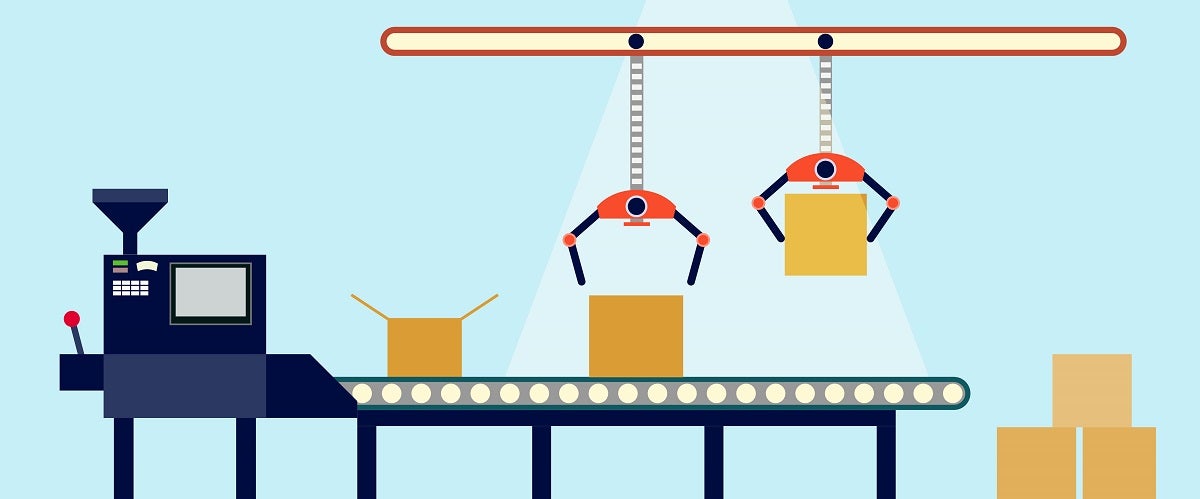
Imagine you’re working a conveyor belt. You are responsible for connecting one widget to another at a moderate pace and sending the resulting product to the next station. After an hour or two of doing this, you’ve gotten pretty good at it. Then, all of a sudden, you’re expected to connect three widgets, then four. These each are funneled from different locations to your conveyor at different times. You need to start assembling three different kinds of products from the four widgets provided and send them to multiple different stations based on your estimates of what each station needs. Oh, and you’re now expected to assemble and send off these widgets in half the time you took before.
This feeling of rapid change, higher expectations, and the struggle to keep up with it all is one that most manufacturing organizations can relate to.
While the manufacturing industry can sometimes appear to be slow-moving compared to other industries, the truth is that the environment and the needs have continued to change, but organizations have struggled to change in response. The conveyor belt keeps becoming more and more complex, and it can be difficult to know how to adapt.
But Really, How Have Things Changed?
“Change is happening!” “Be ready for change!” “It’s important to be aware of and adapt to changes in industry!” Change is often mentioned as a broad idea, but without digging into specifics, it is no help to anyone. So, what exactly has changed over the last few decades? In Debra Smith and Chad Smith’s book, Demand Driven Performance, they outline how a variety of operating circumstances have changed from 1965 to the present. Some examples they listed are:
Supply Chain Complexity – Low to High
Supply chains transformed from generally linear, vertically integrated, and domestic systems to complex global systems.
Product Life Cycles and Customer Tolerance Times – Long to Short
In 1965, most products could expect to remain successful and in-use for years. Now, products often get replaced or fall victim to technical obsolescence within months. In addition, customers used to be willing to wait weeks to months for products, whereas now customer tolerance times end up being days or even hours.
Product Complexity, Product Customization, and Product Variety – Low to High
The complexity, variety, and customization of products has gone from low to high over the last 50 years.
Long Lead-Time Parts – Few to Many
Because customer tolerance times have shortened and more parts are sourced globally, companies are now having to deal with more purchased parts with lead times that are considered long.
Forecast Accuracy – High to Low
The combination of the above changes means that there is less time to make corrections to forecast errors, and therefore accurate forecasting has become more and more difficult.
Pressure for Leaner Inventories – Low to High
It was easier and less risky to build inventory positions when there was less product variety and longer product cycles. Now, companies are struggling to manage the complex supply and demand situations with less working capital.
The Struggle to Adapt
As you can see, most aspects of manufacturing operations have increased in complexity over the last half-century. These changes seem to urge organizations to adapt their processes, mindsets, and technology to better meet the requirements of this new environment, but still, companies struggle.
Why?
One of the biggest reasons is that many of the tools in use weren’t created with the modern environment in mind. They were either created at a different time when operating circumstances were less complex, or they were built using the same rules created when operating circumstances were less complex.
Don’t Slow the Conveyer, Just Get the Right Tools
Let’s think about our conveyor belt situation. Let’s imagine that when you first started working the conveyor, you had a tool that was built to help you connect the two widgets and send the product to the next station. Do you think that tool would be ideal for helping you assemble four widgets into three products and figuring out which of multiple stations to send each to? No. Likely, that tool would hold you back from doing your job to the best of your ability because it was built for a different situation than the one you're currently in. The same is true for many manufacturing software programs. Many manufacturers have not updated their programs to match the current environment, and it’s holding them back from operating at their best.
